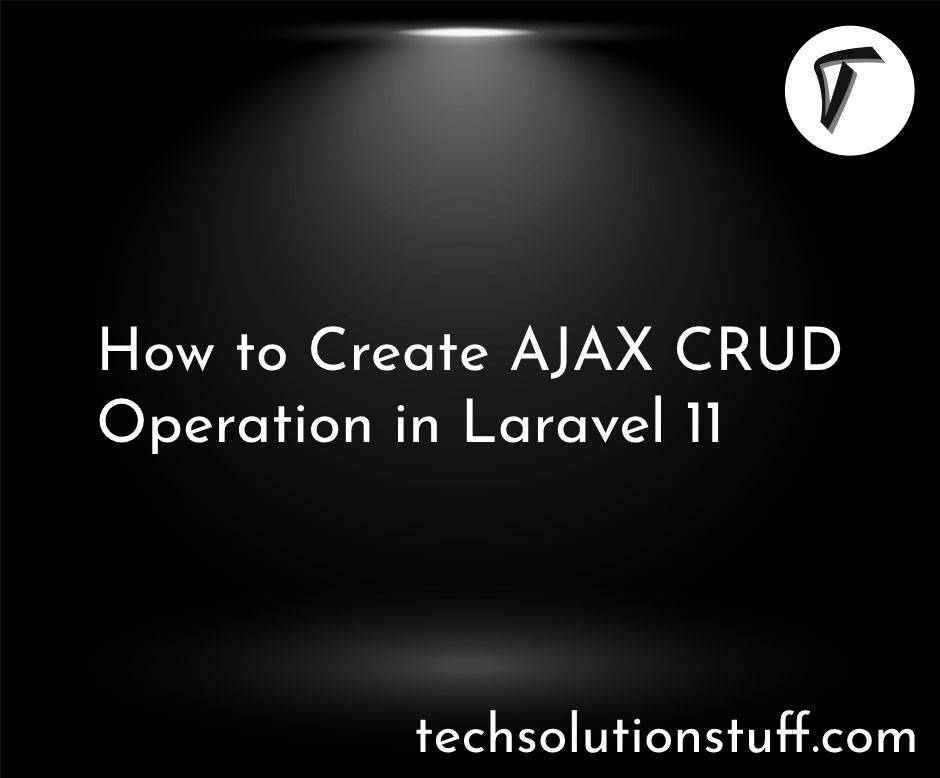Laravel 10 Livewire CRUD Operation Example
In this article, we will see the laravel 10 livewire crud operation example. Here we will learn about how to create crud operation using livewire in laravel 10. Livewire is a full-stack framework for Laravel that makes building dynamic interfaces simple, without leaving the comfort of Laravel.
Livewire provides a number of pre-built components, such as forms and modals, that make it easy to create complex user interfaces quickly.
So, let's see how to create livewire crud operation in laravel 10, livewire crud laravel 10, laravel 10 crud operation, and crud livewire laravel 10.
In this step, we will install the laravel 10 application using the following command.
composer create-project laravel/laravel livewire_crud_example
Now, we will create migration and model using the following command.
php artisan make:migration create_posts_table
Migration:
<?php
use Illuminate\Database\Migrations\Migration;
use Illuminate\Database\Schema\Blueprint;
use Illuminate\Support\Facades\Schema;
return new class extends Migration
{
/**
* Run the migrations.
*
* @return void
*/
public function up(): void
{
Schema::create('posts', function (Blueprint $table) {
$table->id();
$table->string('title');
$table->text('description');
$table->timestamps();
});
}
/**
* Reverse the migrations.
*
* @return void
*/
public function down(): void
{
Schema::dropIfExists('posts');
}
};
After that, we will migrate the table into the database using the following command.
php artisan migrate
Then, we will create Post Model using the below command.
php artisan make:model Post
App/Models/Post.php
<?php
namespace App\Models;
use Illuminate\Database\Eloquent\Factories\HasFactory;
use Illuminate\Database\Eloquent\Model;
class Post extends Model
{
use HasFactory;
/**
* The attributes that are mass assignable.
*
* @var array
*/
protected $fillable = [
'title', 'description'
];
}
Now, we will install livewire using the following composer command.
composer require livewire/livewire
In this step, we will create a livewire component using their command. So, run the below command to create the post crud application component.
php artisan make:livewire posts
After running the above command create two files.
app/Http/Livewire/Posts.php
resources/views/livewire/posts.blade.php
Here, we will write render(), resetInputFields(), store(), edit(), cancel(), update() and delete() method for our crud app.
app/Http/Livewire/Posts.php
<?php
namespace App\Http\Livewire;
use Livewire\Component;
use App\Models\Post;
class Posts extends Component
{
public $posts, $title, $description, $post_id;
public $updateMode = false;
/**
* The attributes that are mass assignable.
*
* @var array
*/
public function render()
{
$this->posts = Post::latest()->get();
return view('livewire.posts');
}
/**
* The attributes that are mass assignable.
*
* @var array
*/
private function resetInputFields(){
$this->title = '';
$this->description = '';
}
/**
* The attributes that are mass assignable.
*
* @var array
*/
public function store()
{
$validatedDate = $this->validate([
'title' => 'required',
'description' => 'required',
]);
Post::create($validatedDate);
session()->flash('message', 'Post Created Successfully.');
$this->resetInputFields();
}
/**
* The attributes that are mass assignable.
*
* @var array
*/
public function edit($id)
{
$post = Post::findOrFail($id);
$this->post_id = $id;
$this->title = $post->title;
$this->description = $post->description;
$this->updateMode = true;
}
/**
* The attributes that are mass assignable.
*
* @var array
*/
public function cancel()
{
$this->updateMode = false;
$this->resetInputFields();
}
/**
* The attributes that are mass assignable.
*
* @var array
*/
public function update()
{
$validatedDate = $this->validate([
'title' => 'required',
'description' => 'required',
]);
$post = Post::find($this->post_id);
$post->update([
'title' => $this->title,
'description' => $this->description,
]);
$this->updateMode = false;
session()->flash('message', 'Post Updated Successfully.');
$this->resetInputFields();
}
/**
* The attributes that are mass assignable.
*
* @var array
*/
public function delete($id)
{
Post::find($id)->delete();
session()->flash('message', 'Post Deleted Successfully.');
}
}
Now, we will update the listing page, create page, and update page.
resources/views/livewire/posts.blade.php
<div>
@if (session()->has('message'))
<div class="alert alert-success">
{{ session('message') }}
</div>
@endif
@if($updateMode)
@include('livewire.update')
@else
@include('livewire.create')
@endif
<table class="table table-bordered mt-5">
<thead>
<tr>
<th>No.</th>
<th>Title</th>
<th>Description</th>
<th width="150px">Action</th>
</tr>
</thead>
<tbody>
@foreach($posts as $post)
<tr>
<td>{{ $post->id }}</td>
<td>{{ $post->title }}</td>
<td>{{ $post->description }}</td>
<td>
<button wire:click="edit({{ $post->id }})" class="btn btn-primary btn-sm">Edit</button>
<button wire:click="delete({{ $post->id }})" class="btn btn-danger btn-sm">Delete</button>
</td>
</tr>
@endforeach
</tbody>
</table>
</div>
resources/views/livewire/create.blade.php
<form>
<div class="form-group">
<label for="exampleFormControlInput1">Title:</label>
<input type="text" class="form-control" id="exampleFormControlInput1" placeholder="Enter Title" wire:model="title">
@error('title') <span class="text-danger">{{ $message }}</span>@enderror
</div>
<div class="form-group">
<label for="exampleFormControlInput2">Description:</label>
<textarea class="form-control" id="exampleFormControlInput2" wire:model="description" placeholder="Enter Description"></textarea>
@error('description') <span class="text-danger">{{ $message }}</span>@enderror
</div>
<button wire:click.prevent="store()" class="btn btn-success">Save</button>
</form>
resources/views/livewire/update.blade.php
<form>
<input type="hidden" wire:model="post_id">
<div class="form-group">
<label for="exampleFormControlInput1">Title:</label>
<input type="text" class="form-control" id="exampleFormControlInput1" placeholder="Enter Title" wire:model="title">
@error('title') <span class="text-danger">{{ $message }}</span>@enderror
</div>
<div class="form-group">
<label for="exampleFormControlInput2">Description:</label>
<textarea class="form-control" id="exampleFormControlInput2" wire:model="description" placeholder="Enter Description"></textarea>
@error('description') <span class="text-danger">{{ $message }}</span>@enderror
</div>
<button wire:click.prevent="update()" class="btn btn-dark">Update</button>
<button wire:click.prevent="cancel()" class="btn btn-danger">Cancel</button>
</form>
Now, we will update the laravel welcome blade file so it will load the crud example on our main URL.
resources/views/welcome.blade.php
<!DOCTYPE html>
<html>
<head>
<title>Laravel 10 Livewire CRUD Operation Example - Techsolutionstuff</title>
<link href="https://cdn.jsdelivr.net/npm/[email protected]/dist/css/bootstrap.min.css" rel="stylesheet">
@livewireStyles
</head>
<body>
<div class="container">
<div class="row justify-content-center">
<div class="col-md-8">
<div class="card">
<div class="card-header">
<h2>Laravel 10 Livewire CRUD Operation Example - Techsolutionstuff</h2>
</div>
<div class="card-body">
@if (session()->has('message'))
<div class="alert alert-success">
{{ session('message') }}
</div>
@endif
@livewire('posts')
</div>
</div>
</div>
</div>
</div>
@livewireScripts
</body>
</html>
Now, we will run the laravel 10 livewire crud operation using the following command.
php artisan serve
You might also like:
- Read Also: How To Create CRUD Operation In Laravel 10
- Read Also: Node.js Express CRUD Example With MySQL
- Read Also: Laravel 9 AJAX CRUD Operations With Popup Modal
- Read Also: How To Create Laravel 9 With Vue JS CRUD Operation








